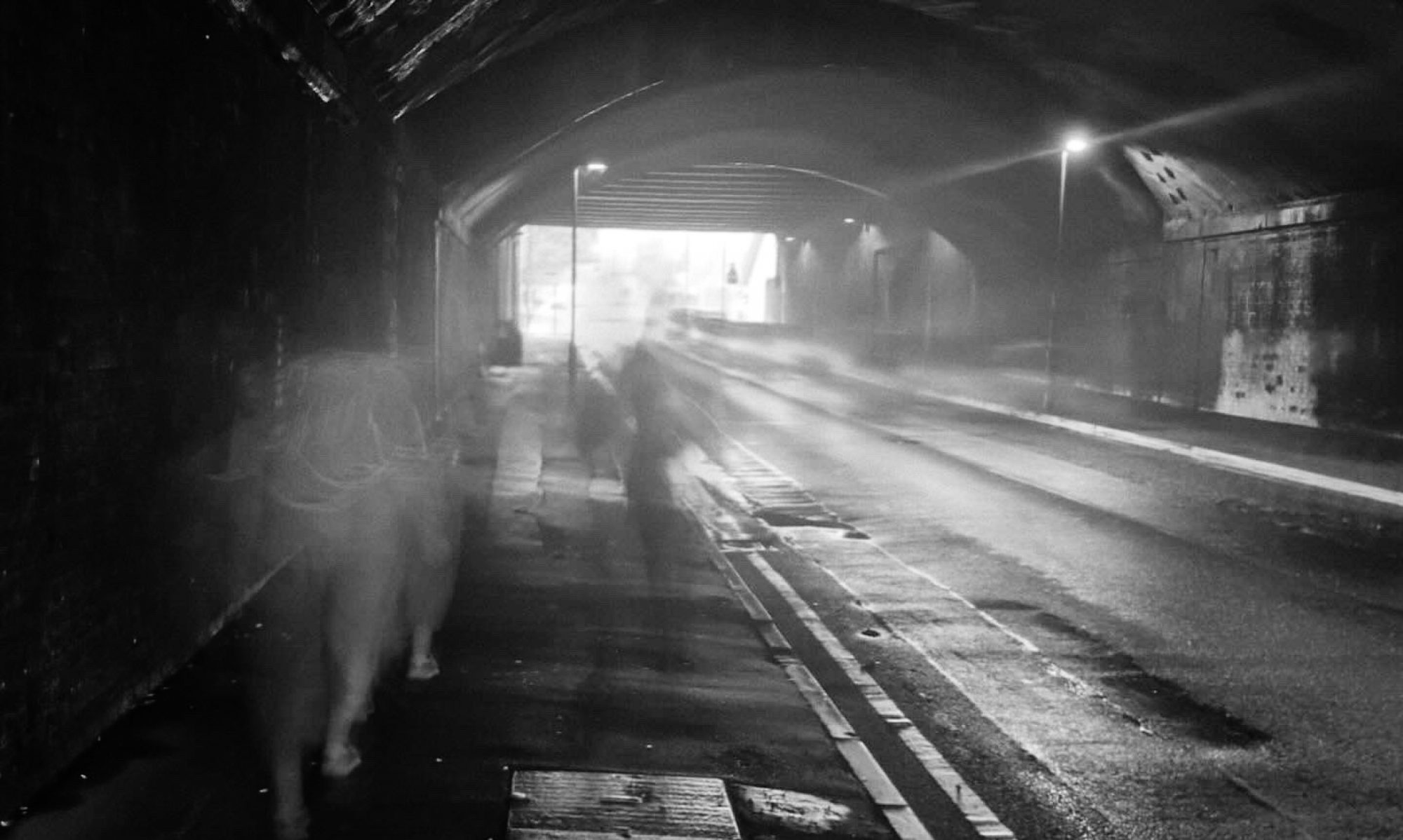August is the best month to have artistic explorations as the campus is quieter and my main focus is readying the studios for the coming academic year.
Strangely, I find the cleaning and sorting is good for my work ethic and working on in the studios themselves help focus my artistic experimentation.
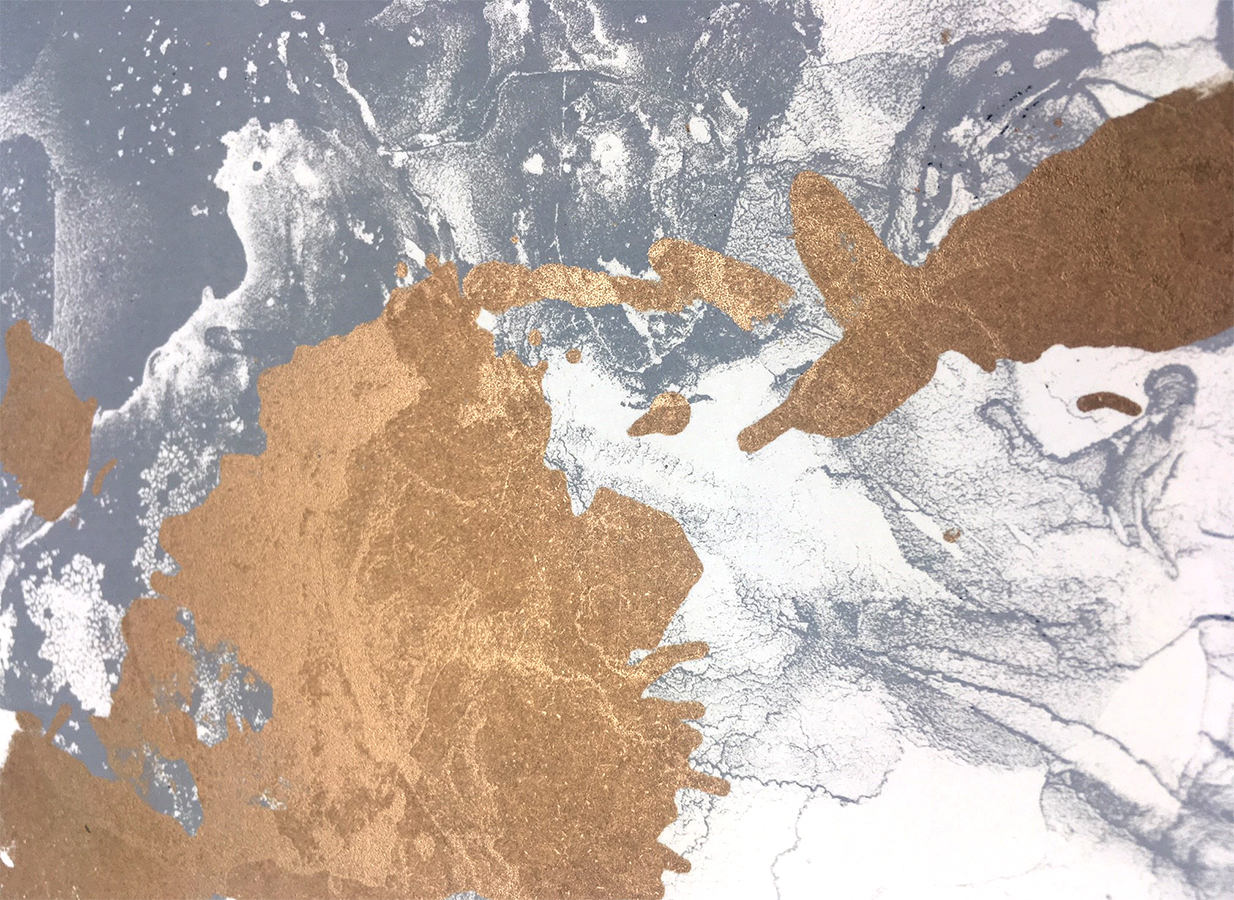
Heaven is in the making
Remains unfinished
A possibility
If there’s a glimpse of it
In the little dance of tonguesEinsturzende Neubauten – Heaven Is Of Honey
The links to music and philosophy may not be immediately obvious within my work, but I am as much influenced by rhythm in language and dissonant chords as I am influenced by visual artists. The gently clanged rhythms and gorgeous singing of Blixa Bargeld is the perfect soundtrack to grow artwork within.
There is also something so incredibly exciting about work in progress. It isn’t finished or complete and I don’t empirically ‘know’ at this point how it will turn out. There are small glimpses of it and endless possibilities. It’s very exciting.
-
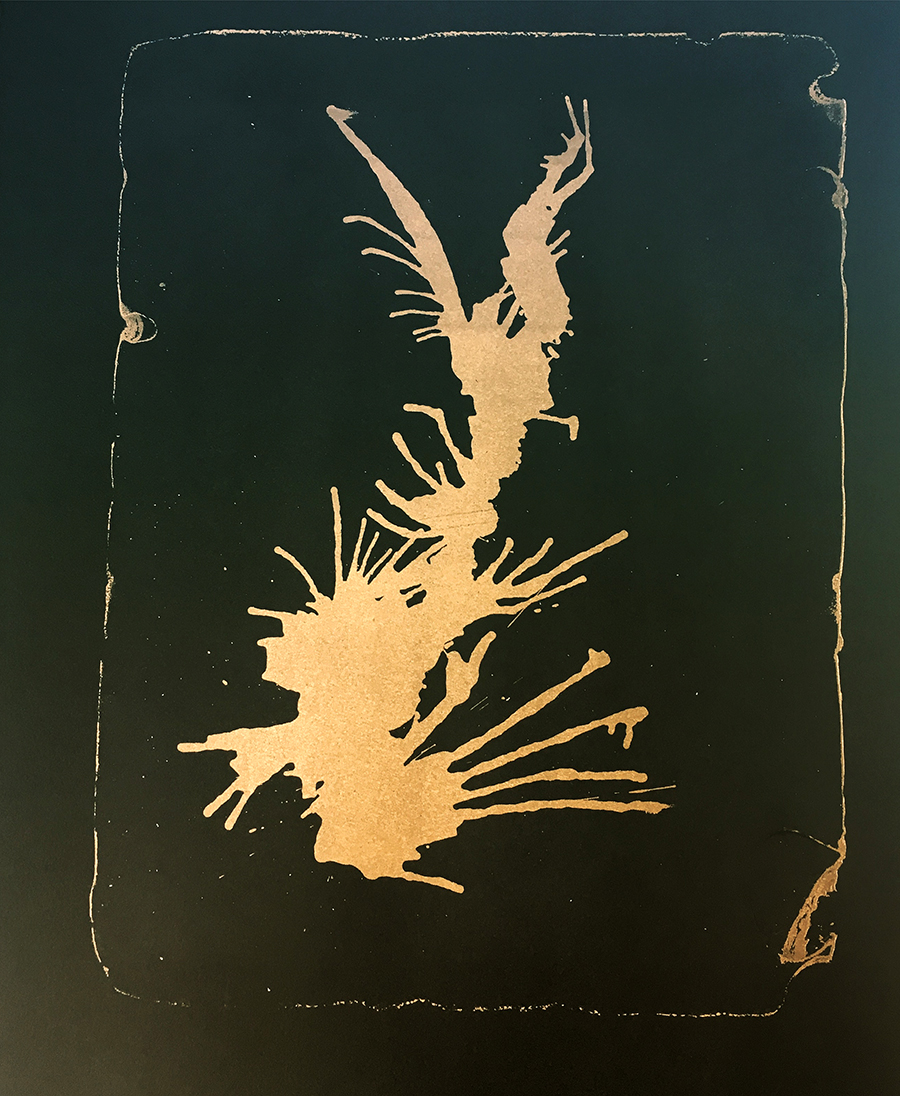
Lithography, August Experimentation, Jane Elizabeth Bennett -
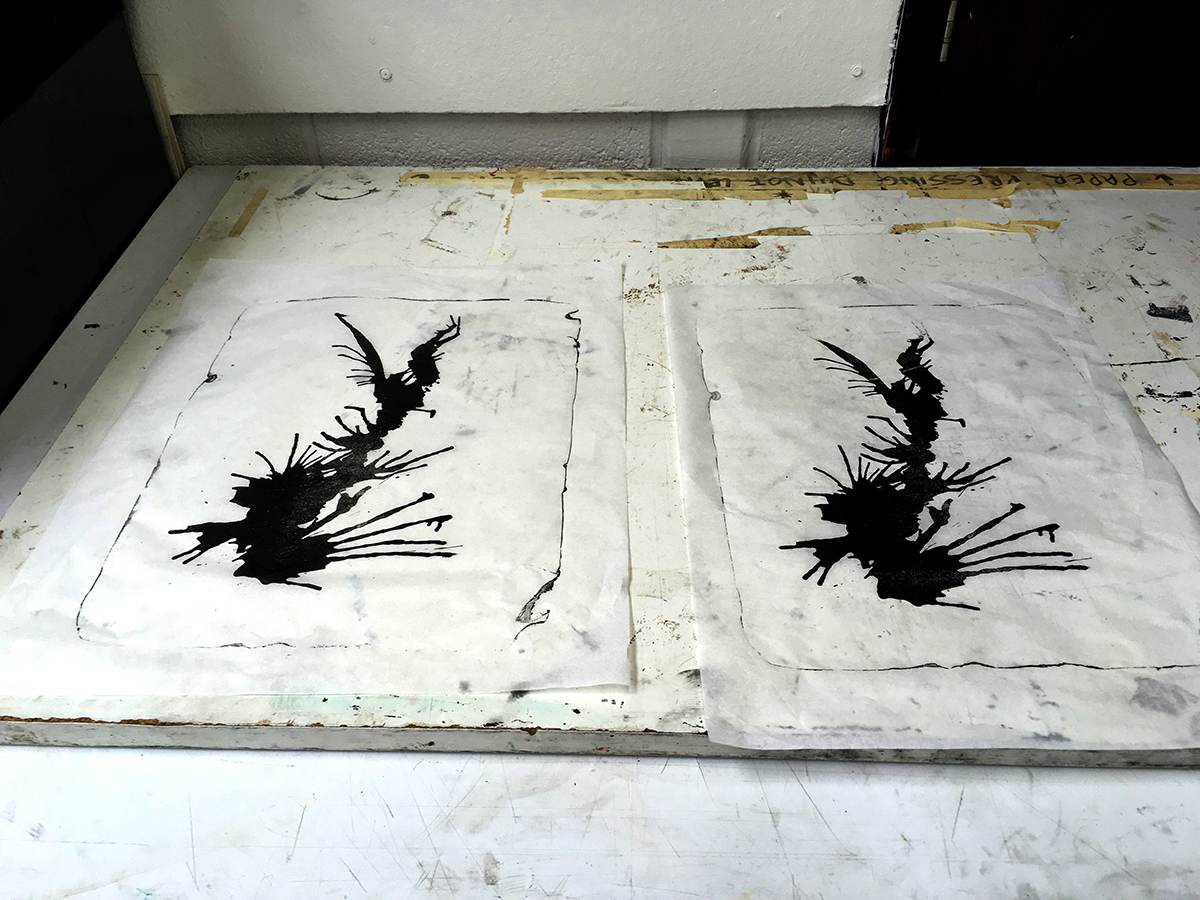
Lithography proofs on tracing paper, August Experimentation -
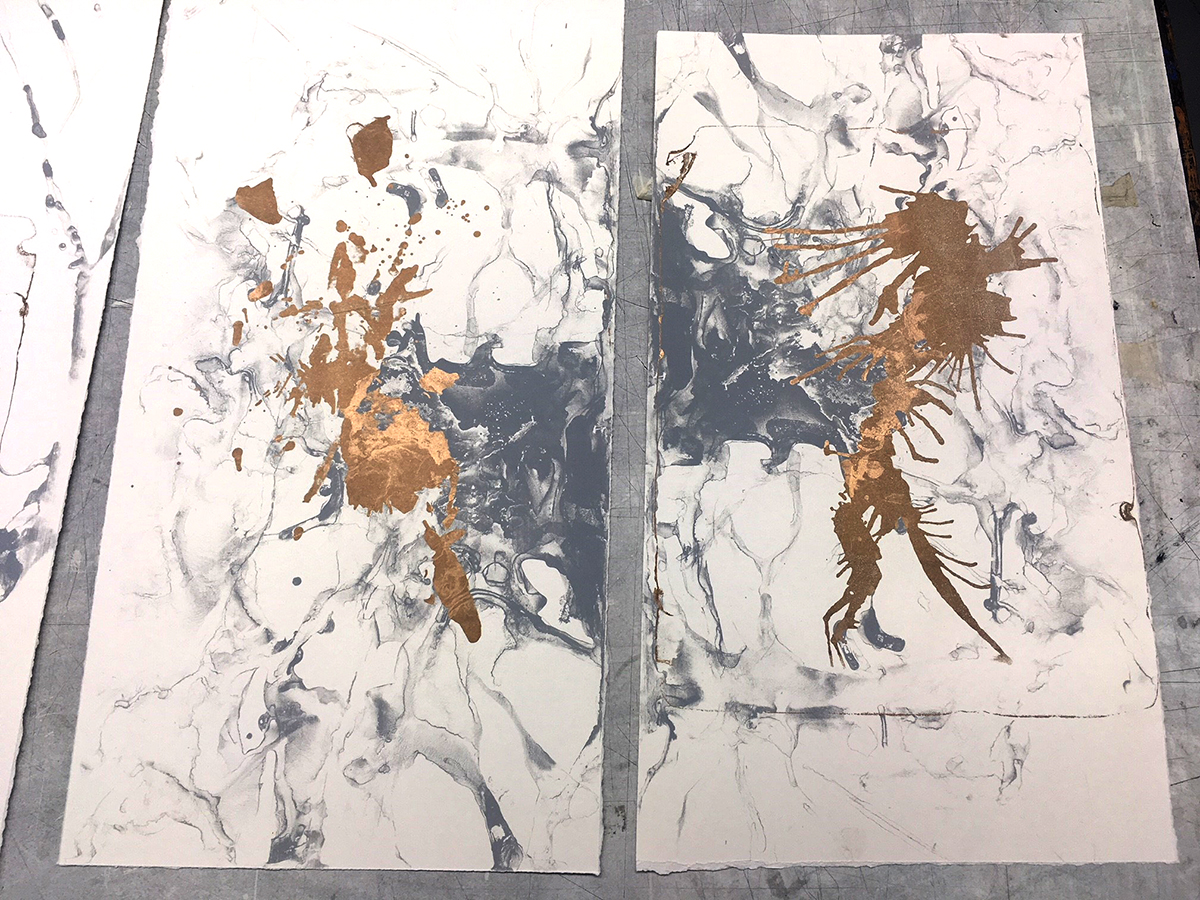
Lithography and Screenprint, 2018, Jane Elizabeth Bennett, August Artistic Experimentation -

Lithography and Screenprint, 2018, Jane Elizabeth Bennett, August Artistic Experimentation -
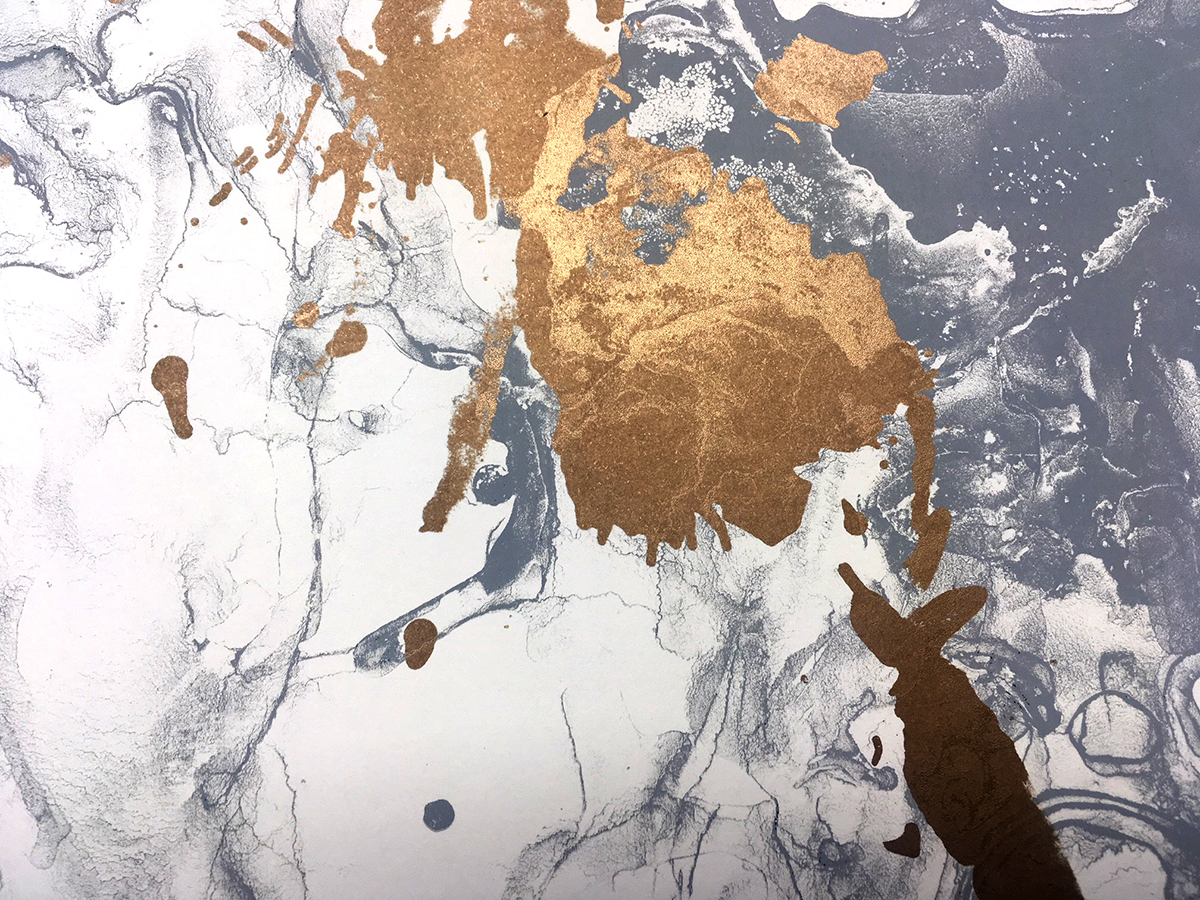
Lithography and Screenprint, 2018, Jane Elizabeth Bennett
The work I have begun to develop in lithography seems to have a natural evolution from my Rhizome project that I began in 2017 on my Ph.D. Fellowship at the University of Central Lancashire.
During this time I began reading A Thousand Plateaus by Deleuze and Guattari and feeling a real connection to the idea of the rhizome. A rhizome is a structure without hierarchy, no top or bottom, beginning or end. In a sense, it is a democratic structure and a philosophy that I have adopted into my artistic practice and overall life. It means to me that the exploration of ideas and development is as important as the outcome, the exhibition is as important as the sketchbook – or in this case, blog. Every component of the creative process is relevant and valid.
These lithographs are still in the very developmental stage as I am still finding my feet within the process. I had my first introduction to the process in April of this year and have had little time to really get to grips with it within my own practice. I am now quite confidently processing my own stones and playing with materials. This is, of course, leading to a few failed experiments – but I often find failure far more interesting and inciteful than success.
To make these images I have been breathing onto the drawing materials, gently blowing and guiding them across the stones. This has created an image that simultaneously captures something transient of me and given a visual validation of an intangible moment. I decided to print these ‘breaths’ in metallic gold over the top of some experimental screen prints that I had in my studio. So far, I am really enjoying the results and look forward to pushing this forward.
The Old Gods would have had a place for us.
I love mono-printing with a screen. I think that it is a truly underrated way to print and something that over my career I intend to master.
-
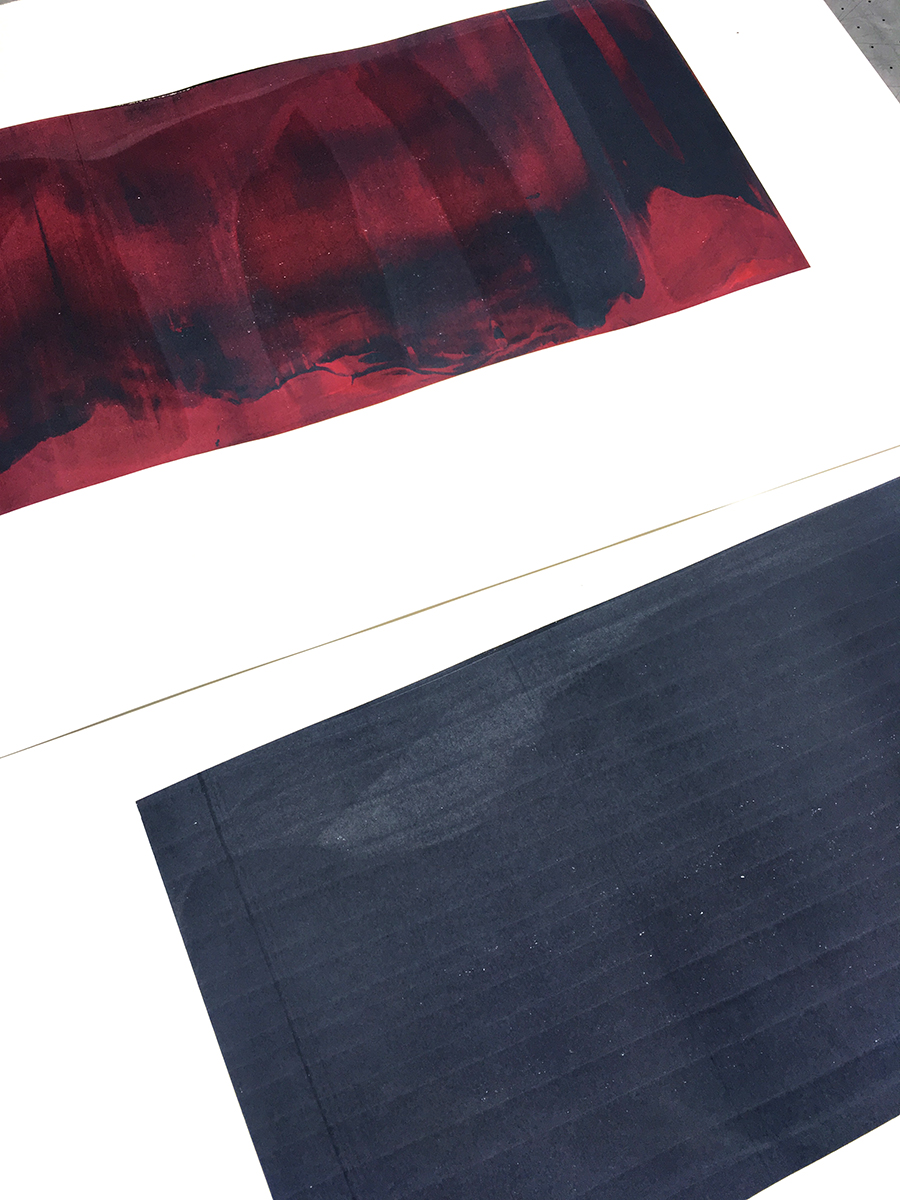
Mono-prints made whilst screen-printing, 2018 -
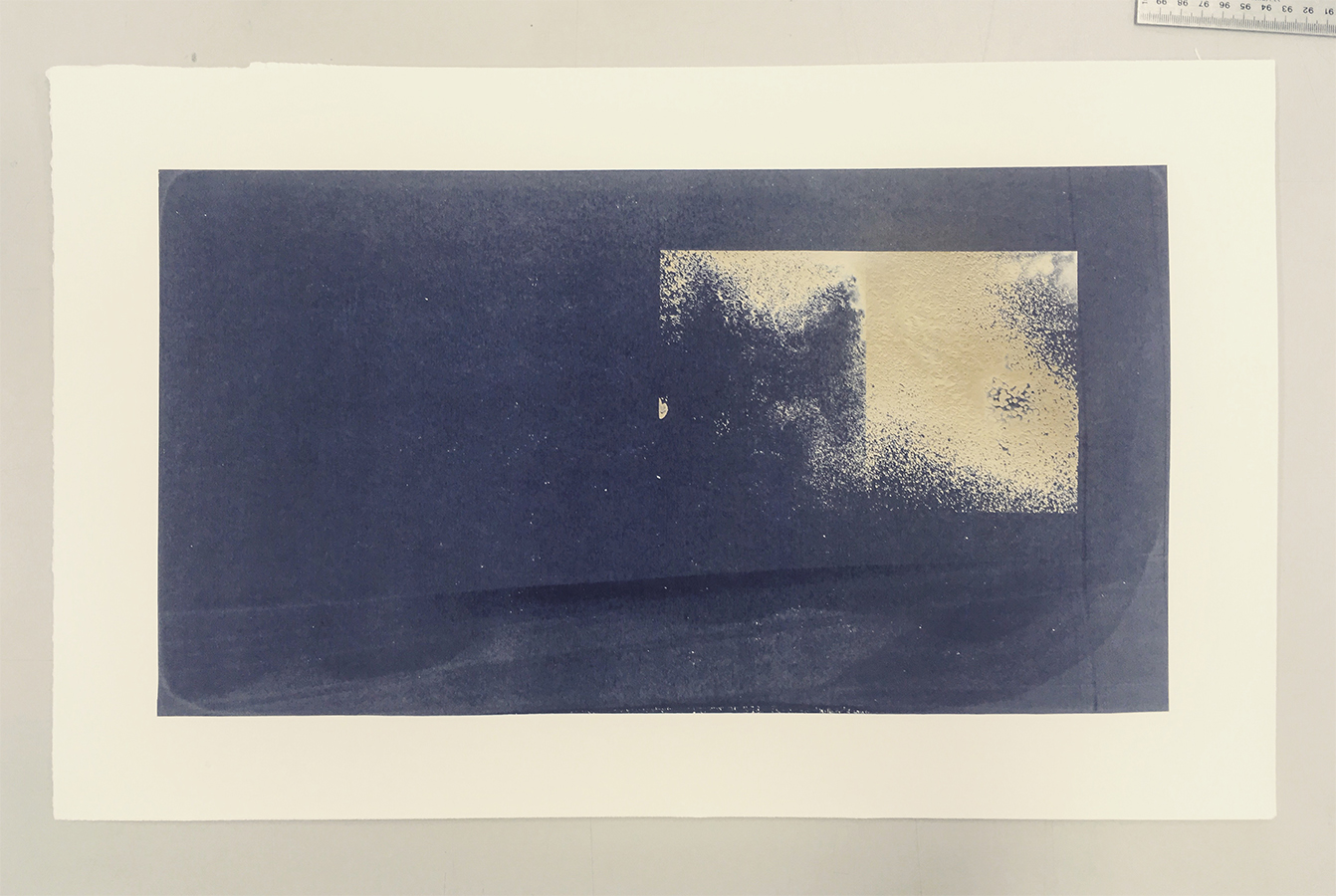
Lasor Etching on screen monoprints, August Experiments 2018, Jane Elizabeth Bennett
Working with mono printing is a very direct approach, it has a very immediate feel, something that other print-based processes just don’t have.
Every time I work in this way, I find myself seeing landscapes and maps, imagining places that I might find myself in – removed from complex forms of communication and social hierarchies. I think this thinking and daydreams are again influenced by A Thousand Plateaus. Forming and reforming landscapes or moving from multiplicity to another. The idea of moving to a more simple way of life or finding something in ‘the old gods’ is incredibly appealing.
-
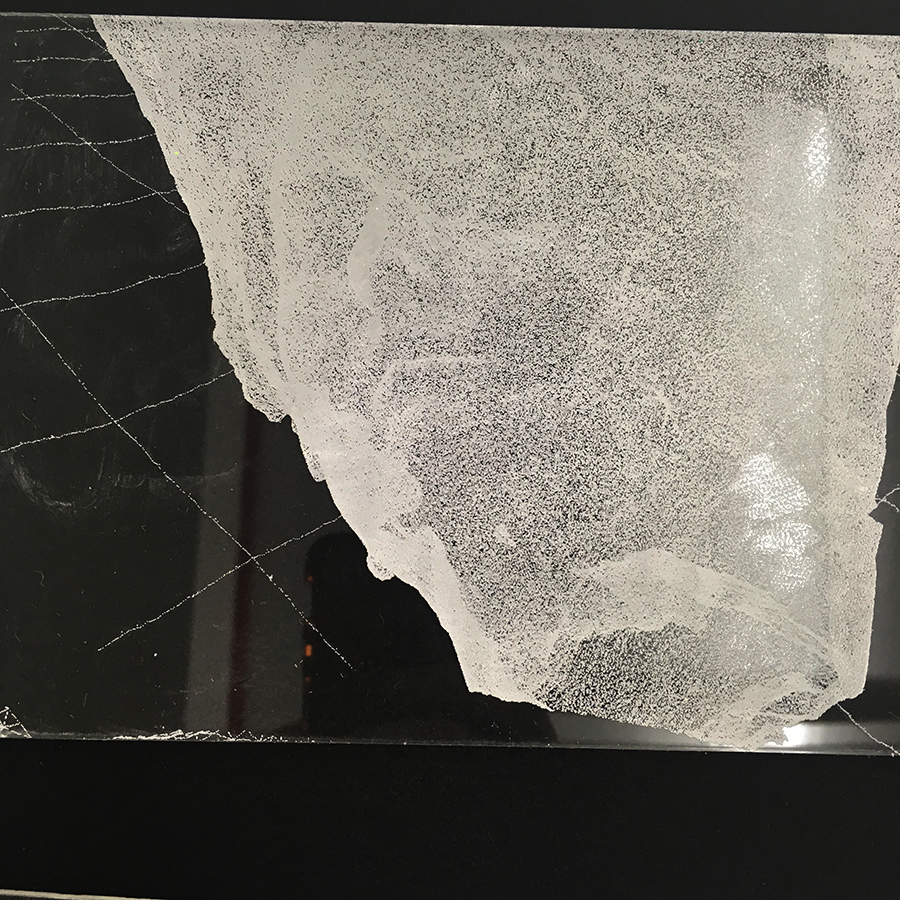
Laser etched 3D scan onto Perspex, 2018, August Experiments, Jane Elizabeth Bennett -
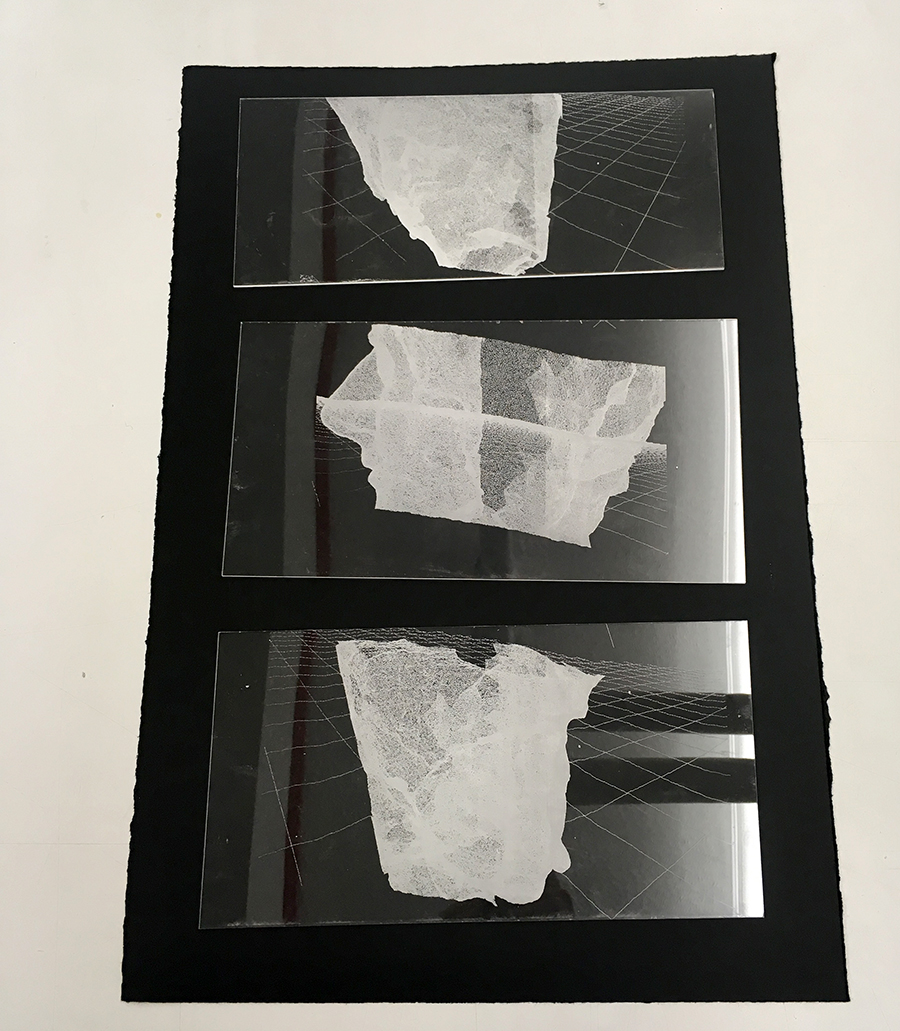
Multiple laser etched scans on perspex, 2018 -
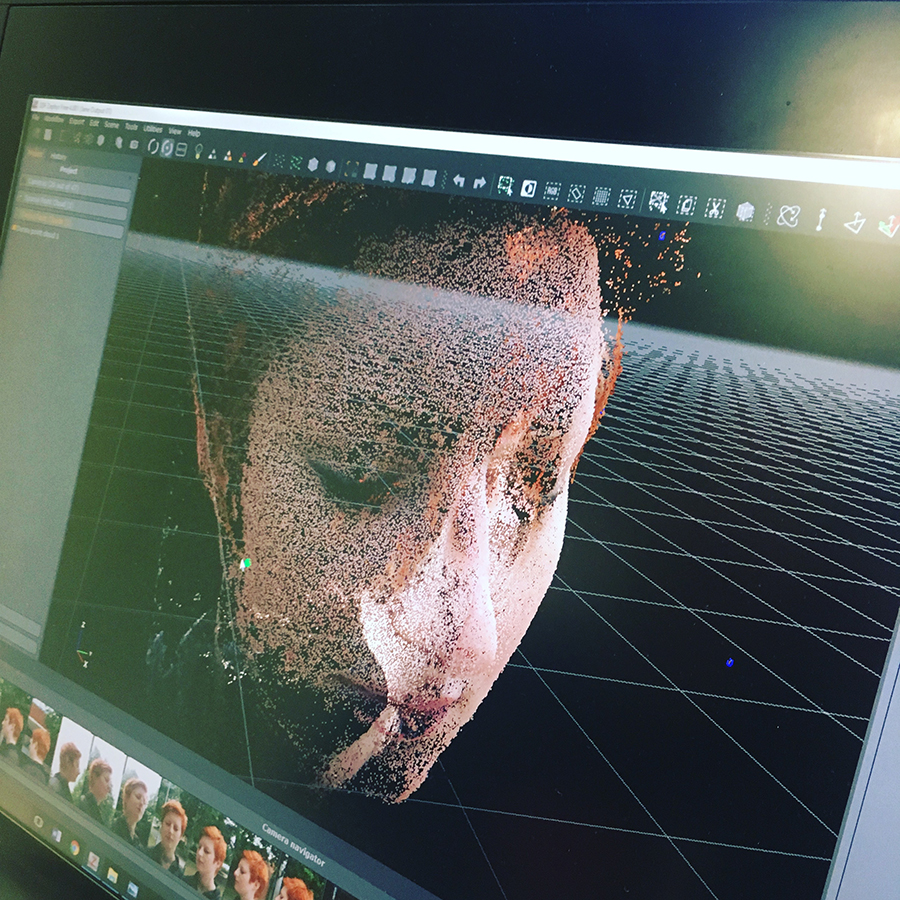
3D Scan of Jane Elizabeth Bennett, 2018 -
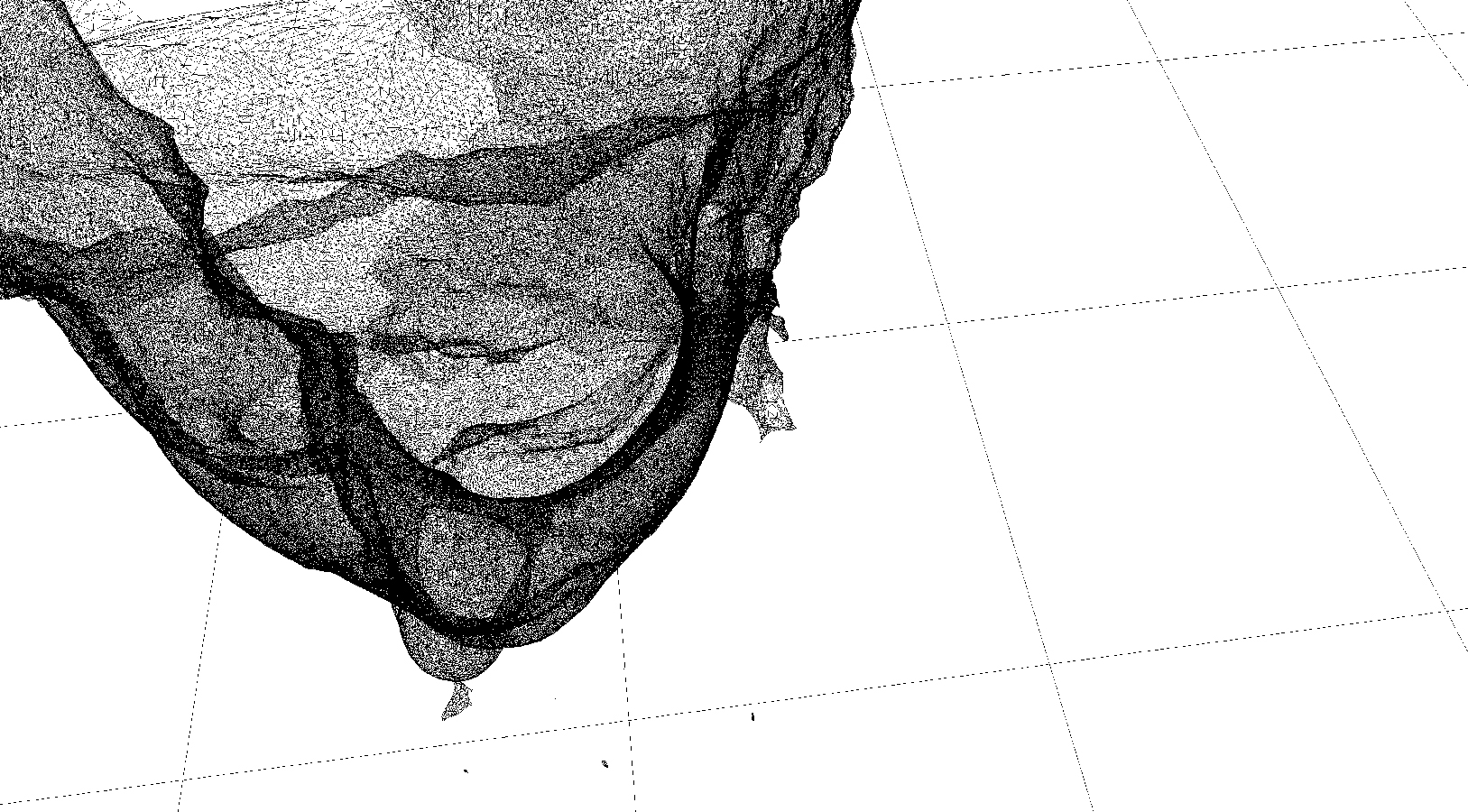
Developing 3D scans, 2018, August Experiments, Jane Elizabeth Bennett
One of the best things about my job is the incredible people that I get to work with on a daily basis. During August we have some downtime (if we’re not all away on leave) and questions like ‘do you think that you could make a three-dimensional scan of my face from photographs?’ is met with ‘I’ll grab the camera!’ Rather than, ‘I’ll check my schedule and get back to you.’
I have been wanting to experiment with making self-portraits for a while, but I think that in the age of ‘digital’ there is a huge pressure, especially on women, to conform to various beauty standards. Analyzing myself is one thing as it leads to self-development, analyzing my aesthetic and being open and vulnerable whilst doing this is another. I am personally left very cold with contemporary beauty culture and selfie culture. (Not to say that there is anything wrong with it. It’s just not my cup of tea.) Because of this, I think it is difficult to make work about ‘self’ without feeling pressured into making work about contemporary beauty – by making and exhibiting work featuring my face, I know that my aesthetic will be judged not only as ‘art’ but also in relation to beauty. I’d be interested to know how other artists, both male and female feel about this. (I’d be interested to know about how anyone of any gender feels about this actually.)
The first time I saw three scans I was amazed, it is such a strange feeling to really ‘see’ yourself, in 3D. To be able to manipulate an image and see facets of your physicality that you would otherwise have no way of seeing. Playing with the program, I can physically see through myself. Manipulate the angle and transparency, add or subtract colour and texture.
The images I like the most (so far) are the ones with the least information. I like the clarity of networks and reference points. In some ways, it makes a rhizome of me.
If you would like to keep up to date with regular experimentation and developments in my practice, please follow me on Instagram, Twitter, and LinkedIn where I post regularly.
